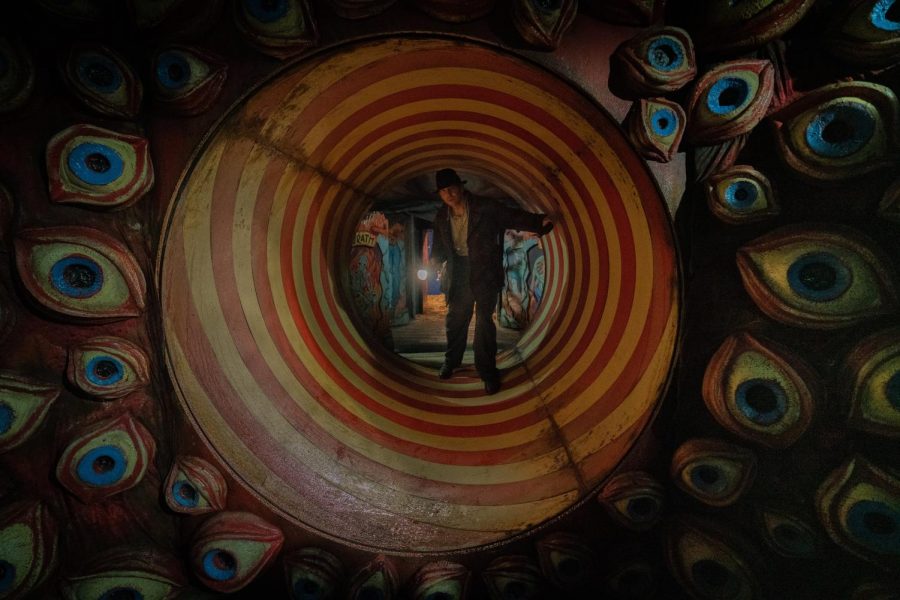Guillermo del Toro delivers haunting noir thriller with stylistically superb ‘Nightmare Alley’
December 3, 2021
As if alleys weren’t scary enough already.
Auteur Guillermo del Toro returns to the big screen with his newest cinematic experience entitled “Nightmare Alley.” Much like the original 1947 noir film of the same name, “Nightmare Alley” follows down-on-his-luck Stanton Carlisle (Bradley Cooper) as he tries to integrate himself into a traveling circus and learn how to become a psychic. Equipped with newfound skills to mislead and trick the elite, Carlisle and a cunning psychiatrist Lilith (Cate Blanchett) hatch a dangerous plan to con an extremely wealthy individual (Richard Jenkins).
Cooper leads the film, taking on the role of the narrative’s mysterious and persistent protagonist. As Carlisle assimilates to his newfound community at the carnival, Cooper’s performance loosens and charms. Taking place over an extended-period of time, Cooper’s performance constantly evolves before reaching the cunning, mysterious noir protagonist archetype fans would come to expect from the genre. Blanchett’s performance as Lilith Ritter squares off well with Carlisle’s poker-face. Her razor-sharp eye contact and precise movements convey the character’s power and control through a visual medium.
Known for his whimsical and often-times haunting visual DNA, del Toro’s past projects, like “Crimson Peak” and “The Shape of Water,” thrived on their beautifully macabre settings. “Nightmare Alley” is no different, sporting an impressively designed retro-carnival freakshow complete with a mechanical haunted house connected to a gigantic demon head. Constant stormy weather and gloomy skies project the film’s setting through a noir lens. Moody lighting and accentuated shadows add an ominous, almost hostile presence to many of the film’s scenes.
“Nightmare Alley” has a narrative split into two distinct parts. The first half of the film showcases Carlisle’s acclimation into the carnival life, where he meets the soon to be love of his life Molly (Rooney Mara). The latter half depicts the couple nearly two years later, now thriving as a masterful clairvoyant duo scheming the wealthy during daily performances. Unfortunately, while much of the first half dazzles with spectacular visuals and intriguing performances, the narrative meanders around with no clear urgency for far too long. If it weren’t for the standout set design, casting and overall atmosphere, this narrative hiccup would be much more of an issue. Luckily, by the second half of the film the plot finds itself and compels urgency as it spirals to its satisfying finish.
Fans of del Toro’s previous work may feel underwhelmed by the lack of extreme horror genre elements, although “Nightmare Alley” certainly lives up to its name with several unsettling moments. A mangled, disoriented human “creature” scrambles around a small viewing pen devouring chickens for crowd entertainment in one of the film’s more disturbing sequences. The circus setting itself looks like something straight out of “American Horror Story: Freak Show.” Like any effective noir film, “Alley” boasts intense violence thus allowing del Toro to flex his knack for ghoulish gore. Lastly, a jarred, one-eyed baby serves as a repeatedly referenced “object” throughout the story.
Guillermo del Toro takes a stab at directing a compelling noir with “Nightmare Alley,” mostly succeeding through stellar set design, atmosphere and performances.
3.5 one-eyed babies out of 5












